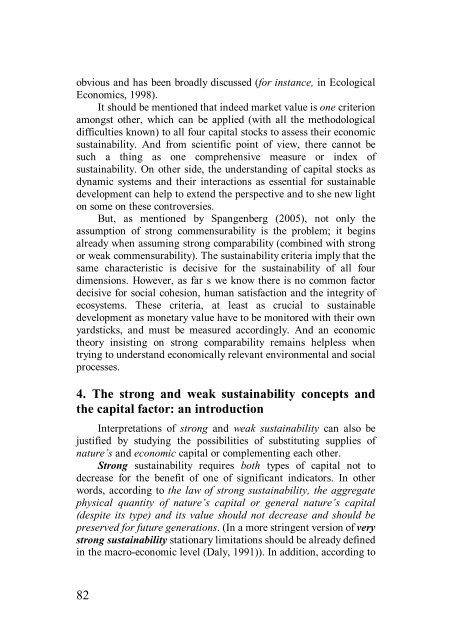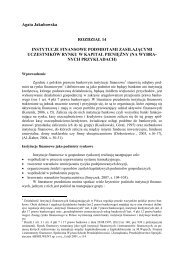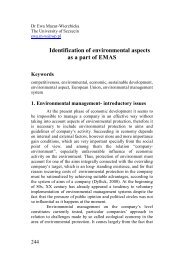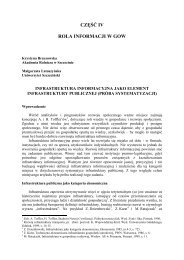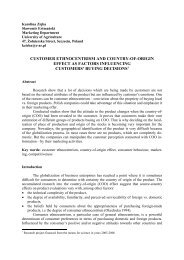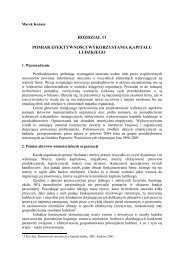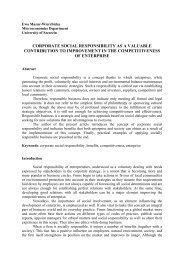Concepts of Strong Comparability and Commensurability versus ...
Concepts of Strong Comparability and Commensurability versus ...
Concepts of Strong Comparability and Commensurability versus ...
You also want an ePaper? Increase the reach of your titles
YUMPU automatically turns print PDFs into web optimized ePapers that Google loves.
obvious <strong>and</strong> has been broadly discussed (for instance, in Ecological<br />
Economics, 1998).<br />
It should be mentioned that indeed market value is one criterion<br />
amongst other, which can be applied (with all the methodological<br />
difficulties known) to all four capital stocks to assess their economic<br />
sustainability. And from scientific point <strong>of</strong> view, there cannot be<br />
such a thing as one comprehensive measure or index <strong>of</strong><br />
sustainability. On other side, the underst<strong>and</strong>ing <strong>of</strong> capital stocks as<br />
dynamic systems <strong>and</strong> their interactions as essential for sustainable<br />
development can help to extend the perspective <strong>and</strong> to she new light<br />
on some on these controversies.<br />
But, as mentioned by Spangenberg (2005), not only the<br />
assumption <strong>of</strong> strong commensurability is the problem; it begins<br />
already when assuming strong comparability (combined with strong<br />
or weak commensurability). The sustainability criteria imply that the<br />
same characteristic is decisive for the sustainability <strong>of</strong> all four<br />
dimensions. However, as far s we know there is no common factor<br />
decisive for social cohesion, human satisfaction <strong>and</strong> the integrity <strong>of</strong><br />
ecosystems. These criteria, at least as crucial to sustainable<br />
development as monetary value have to be monitored with their own<br />
yardsticks, <strong>and</strong> must be measured accordingly. And an economic<br />
theory insisting on strong comparability remains helpless when<br />
trying to underst<strong>and</strong> economically relevant environmental <strong>and</strong> social<br />
processes.<br />
4. The strong <strong>and</strong> weak sustainability concepts <strong>and</strong><br />
the capital factor: an introduction<br />
Interpretations <strong>of</strong> strong <strong>and</strong> weak sustainability can also be<br />
justified by studying the possibilities <strong>of</strong> substituting supplies <strong>of</strong><br />
nature’s <strong>and</strong> economic capital or complementing each other.<br />
<strong>Strong</strong> sustainability requires both types <strong>of</strong> capital not to<br />
decrease for the benefit <strong>of</strong> one <strong>of</strong> significant indicators. In other<br />
words, according to the law <strong>of</strong> strong sustainability, the aggregate<br />
physical quantity <strong>of</strong> nature’s capital or general nature’s capital<br />
(despite its type) <strong>and</strong> its value should not decrease <strong>and</strong> should be<br />
preserved for future generations. (In a more stringent version <strong>of</strong> very<br />
strong sustainability stationary limitations should be already defined<br />
in the macro-economic level (Daly, 1991)). In addition, according to<br />
82


